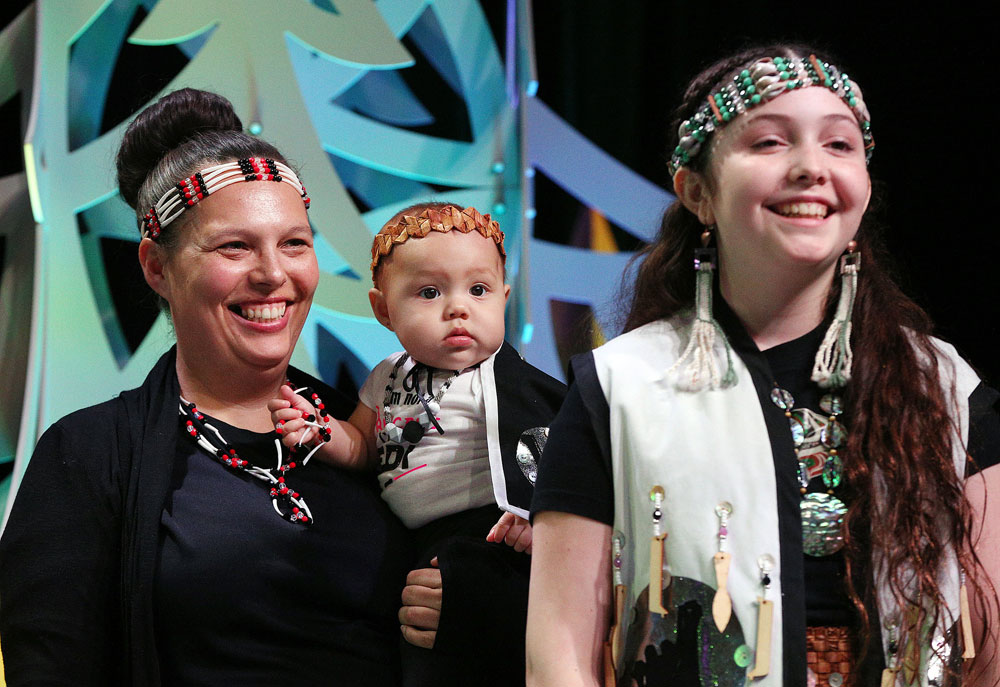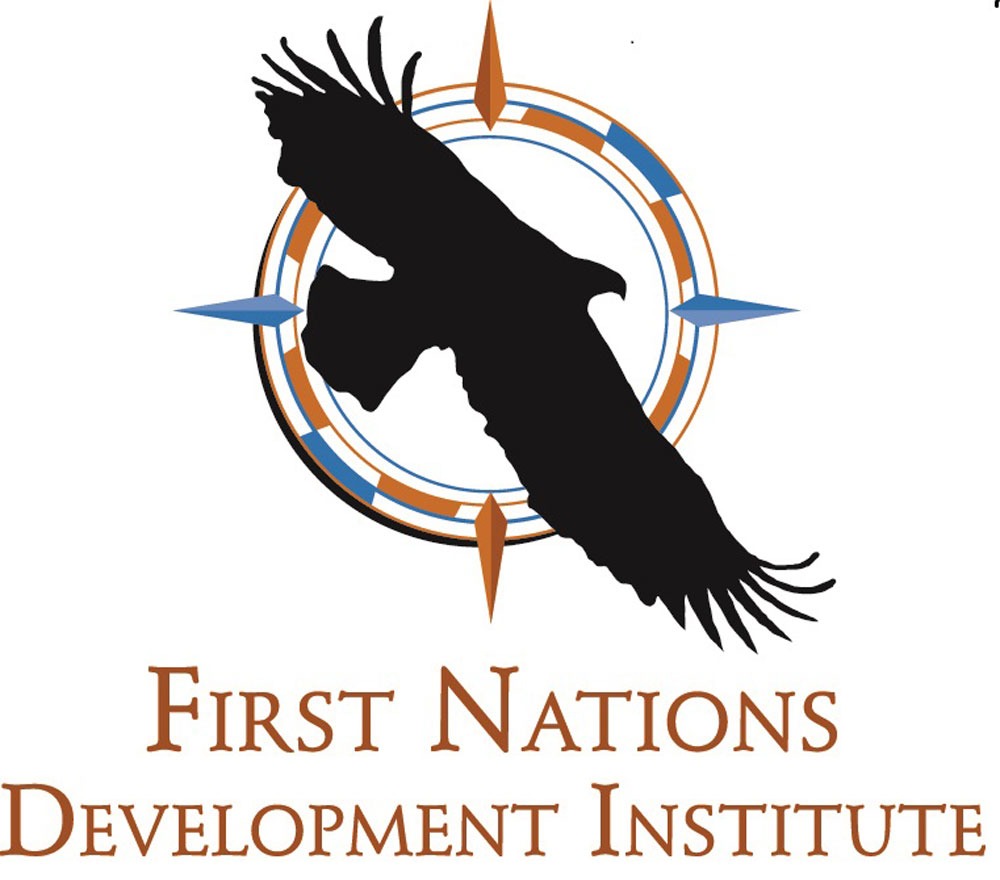
This article is the seventh in a series that NPQ, in partnership with the First Nations Development Institute, is publishing this fall. It features Native American activist writers who highlight the practices of community building in Indian Country and identify ways that philanthropy might more effectively support this work.

Philanthropy can often reinforce socially constructed negative assumptions of Indian Country through using deficit-based approaches. Conversely, an asset-based approach focuses on strengths, honors and builds upon the rich traditional knowledge tribal communities carry, and nurtures holistic interventions. When guided by an asset-based approach, partnerships can better address tribal communities’ complex problems.
There are many ways to instigate and support meaningful and positive change in Indian Country. It begins with Native communities and funders developing and sustaining strong, respectful, safe, collaborative partnerships rooted in promoting cultural continuity that encourage innovative thinking.
Unfortunately, too much philanthropic work with Native communities is rooted in and driven by deficit-based frameworks that are needs-driven, problem-focused, and centered on what is missing. This approach employs a Western perspective that defines what are considered credible research frameworks, interventions, evaluation methods, and legitimate impacts. These factors dictate the allocation, or lack of, philanthropic investment and effort with Native-led organizations.
By contrast, when partnerships are grounded in an asset-based perspective, they nurture respectful, authentic, and collaborative partnerships rooted in promoting cultural continuity which encourages innovative thinking. Such partnerships use evaluation as a tool to support tribal sovereignty, amplify community strengths, and contribute to tribal nation-building efforts for the citizens they represent.
Below we outline four key principles that support asset-based partnerships between Native communities and philanthropy. The four key principles are: 1) centering native voice, 2) culturally grounding data collection, 3) respecting Native sovereignty, and 4) elevating storytelling and treating stories as the valuable qualitative data that they are.
Centering Native Voice Benefits Us All
Funding opportunities and evaluation methods can be powerful tools to support positive change throughout Indian Country. Yet, when identified and implemented in a silo, both can work as tools of assimilation and harm the communities they seek to help.
There are numerous prospects to cooperatively develop robust funding priorities and identify effective evaluation methods with, not for, Native communities. Foundations can cultivate strong relationships by listening and engaging respectfully and consistently in community-driven conversations that explore both needs and strengths. They can build on what they hear to develop responsive funding initiatives and evaluation methods that directly address community needs and amplify community strengths.
For example, foundations interested in addressing poor health outcomes in Indian Country could prioritize engaging in health system conversations with tribal communities. These conversations may lead to identifying barriers to accessing culturally appropriate foods that emulate ancestral diets and traditions. Building on these conversations, foundations could then allocate and develop calls for proposals under a broad “tribal food sovereignty” health agenda intended to mobilize community members to fortify their ability to eat more traditional foods. Broad funding agendas and proposals give space for tribal citizens to define and shape projects that best reflect their community’s culture, people, strengths, and specific needs. Broad proposals also acknowledge that no two tribes are the same and that they often have unique needs and strengths. This type of responsive philanthropy requires funders to relinquish some power and control to truly respond to community needs.
Grounding Data in Native Culture
Research and evaluation have the potential for great harm or great good. Historically, Western-rooted inquiry that employs a deficit-based perspective has justified the erasure of Native communities. But when research and evaluation are culturally grounded and guided by a responsive, collaborative, holistic, and strength-based perspective, they have the potential to promote cultural continuity, revitalization, nation-building, and Native sovereignty.
Data used to highlight deficits results in harm in many ways. Foundations often ask for a needs statement supported by data, yet data is very limited and often inaccessible in Indian Country. If the data does exist, it often doesn’t reflect the specific population the project hopes to serve and is fractionated across federal, local, state, and tribal databases. Ultimately, this forces projects to draw upon data from other communities, which can overgeneralize the similarities among Native people and nations.
Finite data on Native people is not an oversight. Western systems are deeply rooted in statistics and figures, and without them, Native communities become undetectable. This invisibility justifies our exclusion from important policy conversations and considerations, which leads to our ultimate erasure.
Needs statements typically construct a story based on shortfalls. In order to be competitive, communities amplify data that illuminates the most deficits. It is important to communicate the severity of our needs, but our stories are incomplete when we are consistently reduced to what we lack against western “normative” standards. This framing perpetuates the narrative that Native communities are less than and need western ways to save or fix us. From a health perspective, this looks like a community’s health story told exclusively by negative health indicators like obesity and disease. An accurate portrayal of health calls for holistic data that also highlights strengths and identifies assets alongside needs.
Research is often funded through grant applications. A funded deficit-based proposal can actually cause harm by reinforcing reductive and negative representations of Native people. Subsequently, the required deficit-based needs statements bind communities to harmful practices to access or maintain funding. This dynamic exemplifies the concept of “golden handcuffs,” or being bound financially to something that is harmful.
Funders can support indigenous sovereignty by encouraging holistic data, asset-based frameworks, and community-identified metrics which support comprehensive and accurate stories. Authentically supporting accurate and comprehensive data stories means philanthropists must be comfortable thinking outside the box, providing technical assistance, and trusting community members as experts in assessing and diagnosing their own needs, solutions, and future possibilities.
Sign up for our free newsletters
Subscribe to NPQ's newsletters to have our top stories delivered directly to your inbox.
By signing up, you agree to our privacy policy and terms of use, and to receive messages from NPQ and our partners.
Supporting Sovereignty
Request for proposals often come with a call for a short, predetermined list of “evidence-based practice.” It’s critical to consider the limitations of their generalizability, specifically when working with tribal populations. Often, many evidence-based interventions are not conducted, developed, or led by Native people and therefore lack cultural relevancy.
Requiring a specific intervention to access funds, credible through Western evaluation methods, echoes a painful history of research as a tool for assimilation. If the project isn’t successful, fault is commonly placed on the community as opposed to the intervention’s design. This dynamic puts Native communities again into golden handcuffs by agreeing to possibly unresponsive, or even harmful, interventions to gain resources. Finally, it fails to empower and center the very community it intends to support.
This isn’t to say that interventions used in one Native community can’t succeed elsewhere. Sharing knowledge throughout Indian Country can ignite ideas, adaptations, and considerations for new projects. But sovereignty must remain at the heart of the work. A community might decide to duplicate a successful intervention, but ultimately the community should hold that decision-making power. In fact, throughout history our communities have always respected each other’s unique wisdom and perspectives. In short, our knowledge was our wealth. Sharing this wealth with each other was critical to our survival and contributed to our holistic resiliency.
Funders can support tribal sovereignty and animate truly meaningful change by taking a community-led approach and moving beyond generalizations, assumptions, and prescribed interventions. In this manner, philanthropy can encourage communities to identify and define what best aligns with and meets their own needs and then provide support to expand those efforts.
Hearing Our Stories
Metrics and methods are another way research and evaluation can harm and perpetuate deficit-based narratives. Often funders use predetermined metrics and only quantitative methods, which focus exclusively on the reduction of deficits. Prescribed metrics and methods can contradict traditional research paradigms and leave little room to exercise sovereignty or revitalize traditional methodologies that more accurately align with and capture community values and culture.
Reflecting upon the role of metrics and methods begins with a basic understanding of research theory. Historically, dominant science viewed research as objective and “value-free.” It has also privileged numbers over qualitative data. It emphasized the importance of generalizability across groups, meaning what is true for one community is true for everyone. Indigenous communities deeply know that research and science are not value-free. Throughout colonization, Western researchers constructed items, methods, and frameworks deeply rooted in their ways of knowing and being, applied them to Indigenous communities in isolation, and used the results to justify assimilation.
This traditional research perspective doesn’t align with our cultural ways of knowing and being. Our culture sees human existence as complex, dynamic, and interrelated. Many of these factors are not captured by quantitative methods alone. These social relations and the community context are critical to creating meaningful, lasting change. Philanthropy has an opportunity to expand the range of acceptable data and methods to include data like elder testimony and storytelling.
Indigenous communities have used science, research, and evaluation for subsistence over thousands of years. These methods have survived systematic attempts to destroy our communities, cultures, and governments. Observation and quantitative methods were used to improve and innovate our work and lives, but not in isolation. Our traditional stories teach us that when there was trouble, it was often because characters focused too much on observation and lost sight of context. Our traditional stories teach us that listening is just as critical as observing and that quantitative data is best understood alongside qualitative data to promote synergistic research practices.
Foundations can profoundly impact and support Native communities in their journey to reclaim and revitalize research practices that consider the richness and complexity of health from a cultural perspective. They can also support the use of Indigenous research methods that align with cultural values, knowledge, and histories to more accurately capture impacts. Technical assistance, if needed, can build platforms to support internal community driven research capacity. Consequently, funders have the potential to support Native communities to leverage research as a helpful tool to support the revitalization of cultural knowledge and practices and support tribal sovereignty, by making the work community-based and culturally relevant.
Concluding Thoughts: Investment Requires…well, Investment
True partnerships with Native communities are meaningful and affirm tribal sovereignty by amplifying their unique strengths and supporting the nation-building agendas of tribes and the citizens they represent. Often, Western research strives for a silver bullet solution, aiming for maximum impact and cheapest cost. Aggressive one-to-two-year funding cycles demonstrate this concept with limited funding or support for planning and evaluation.
Our needs were not developed in one or two years, but over multiple generations. It will take thoughtful engagement, investment, and time to create lasting change.
Responsive collaboration with tribal communities means purposefully implementing Indigenous methodologies that move away from deficit-based frameworks built on western concepts.
Today, tribes are more willing to share research knowledge and expertise with the philanthropic community than in the past. In order to promote a reciprocal learning relationship, philanthropy must be willing to expand their research understanding too. They must prioritize listening and learning from the communities they fund. Funders must show respect and recognize that both parties have valuable resources, knowledge, and expertise to bring to the table.
In short, investment requires…well, investment. A diligent and thoughtful process might require more time and cost up front, but it will later lead to compound opportunities for sustainable and lasting impacts. It might be tedious, arduous, and untidy work to authentically center relationships and sovereignty, but this process is essential to sincerely animating positive change in the long term.
Finally, truly empowering Native people to not just participate, but lead the work—socially constructing health—can have an enormous impact by addressing these divergent processes and research landscapes in our own communities. In this way, we can rebalance power and ultimately catalyze the sweeping systemic changes and holistic approaches necessary to address the complex problems our communities face.









